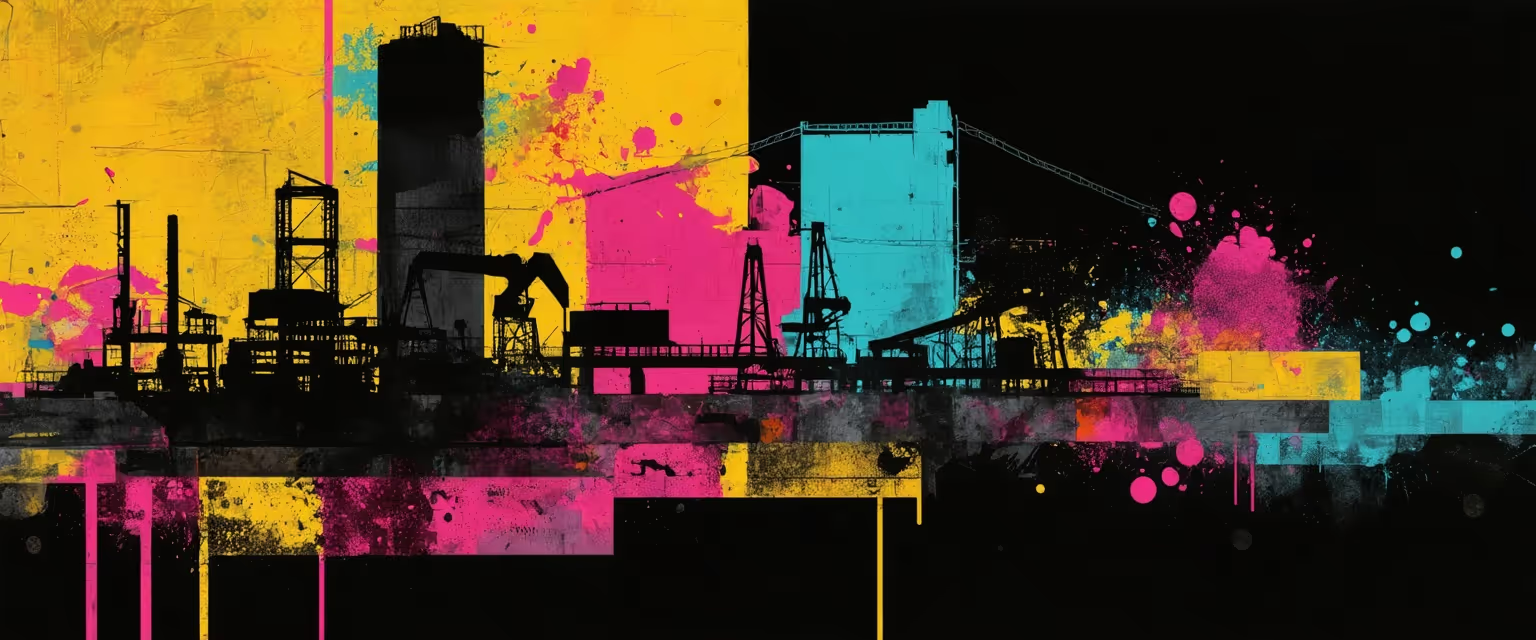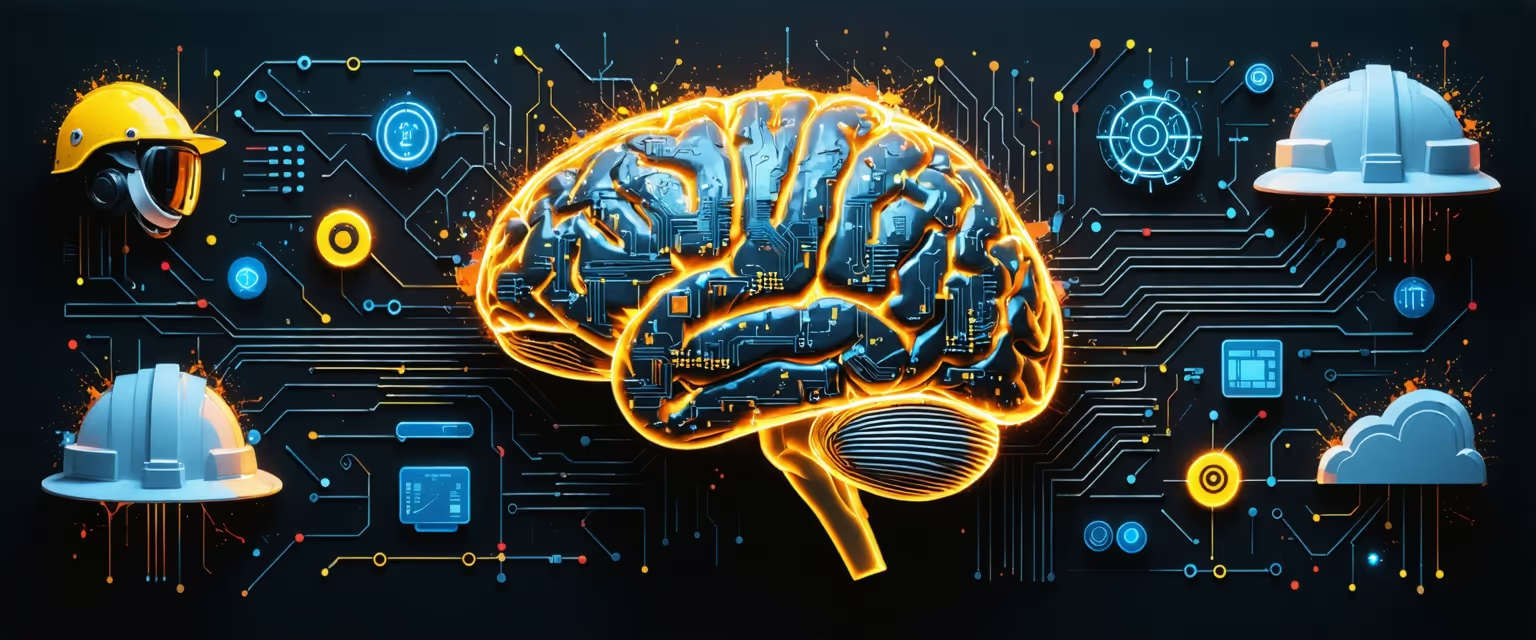All Posts
Construction - AI-Powered Construction Safety & Compliance
Smart AI Solutions for Automated Surveillance & Monitoring in Construction

Discover how AI transforms construction with smart surveillance & monitoring, enhancing safety, compliance, and efficiency. Integrate AI seamlessly for results.
In the construction industry, integrating diverse data sources for smart surveillance and monitoring is a significant challenge. However, understanding how AI automates smart surveillance and monitoring in construction can make a profound difference. By harnessing the power of AI to automate smart surveillance and monitoring in construction, we can unify these scattered data streams into a cohesive, actionable format.
Datagrid’s AI-powered solutions offer a specific solution by seamlessly consolidating your surveillance and monitoring data into one platform. By addressing this problem head-on, you can enhance safety measures, expedite decision-making, and eliminate frustration.
How AI Automates Smart Surveillance & Monitoring in Construction
In the construction world, using AI for smart surveillance and monitoring has a clear goal: enhance safety, ensure compliance, and boost overall efficiency. AI keeps a vigilant eye on every aspect of a project, helping you spot potential hazards on the fly and accurately document progress. This proactive approach not only prevents costly delays but also provides teams with reliable data to fine-tune schedules and keep operations running smoothly.
Significance of AI in Construction
AI's impact on construction, especially in automating smart surveillance and monitoring, isn't just a minor upgrade—it's reshaping how projects are planned and executed. Rather than reacting to problems as they pop up, AI-powered platforms sift through past data and real-time site conditions to identify risks before they escalate.
By forecasting budget overruns or scheduling conflicts, these systems help teams adjust tasks early. This kind of predictive power is invaluable when you're aiming to deliver projects on time and under budget.
Overview of AI's Role
AI is making waves across construction sites, especially in automating smart surveillance and monitoring. Drones and advanced cameras powered by machine learning models detect anomalies, track worker safety gear, and scan for site regulation violations. Managers receive alerts when something's off before it turns into a serious setback. Whether it's ensuring everyone follows safety guidelines or confirming project milestones, AI reduces grunt work and boosts accountability.
Smart Surveillance and Monitoring Systems Utilizing AI
AI-driven surveillance and monitoring systems have become essential in construction because they improve safety, reduce manual oversight, and cut unnecessary expenses.
Explanation of Smart Surveillance Technologies
Smart surveillance refers to automated systems that analyze video feeds and sensor readings without waiting for human intervention. These setups can spot patterns, recognize objects, and catch anomalies in real time. For instance, if a vehicle wanders into a restricted zone, the system instantly alerts the site supervisor. This level of automation reduces reaction times and maintains a safer job site.
Integration of AI in Monitoring Systems
When AI becomes part of monitoring, the shift moves from mere observation to proactive prevention. Algorithms gather and interpret data from cameras, sensors, and past incidents to forecast equipment failures or unsafe conditions. Crews get a warning before something goes haywire, saving downtime and protecting people from harm. These systems keep improving with every instance they analyze, giving construction managers better control over what's happening on-site.
Overview of Key Technologies
- Computer Vision: Enables cameras and sensors to interpret visual input. On a job site, it confirms compliance with safety rules and monitors progress around the clock.
- IoT Integration: Connects sensors and devices, streaming continuous data back to AI-powered hubs. Teams can track site activities more transparently, reducing guesswork.
- Machine Learning: Identifies risky behaviors or anomalies by comparing real-time updates with historical data. Its self-learning nature sharpens accuracy over time, and through AI data extraction, it helps turn raw data into actionable insights.
Smart surveillance does more than just watch—it acts as a proactive partner that flags hazards, gathers data for analysis, and lays a strong foundation for efficient operations.
Benefits of AI Automation in Construction Site Safety and Security
AI's impact on construction site safety is profound, with metrics and case studies revealing tangible wins in risk reduction, real-time oversight, and controlled access. This is all made possible through AI-powered automation.
Enhanced Safety Measures
Predictive analytics is a powerful addition to any safety plan. AI tools pull from data on everything from weather conditions to equipment status and worker patterns. In documented cases, these systems have reduced on-site injuries significantly. By proactively alerting crews when conditions become dangerous, AI removes much of the guesswork from safety management and keeps teams a step ahead of potential threats.
Real-time Monitoring and Alerts
AI doesn't just spot problems—it raises the red flag immediately. Automated checks reveal whether workers are using required protective gear or if an unauthorized person shows up. Supervisors receive real-time notifications, which cuts reaction times dramatically and reduces the odds of a serious incident. This kind of real-time analysis is crucial for proactive management. These insights also help in planning better workflows and coordinating resources, creating a safer, more responsive work environment.
Improved Access Control
AI models streamline entry to restricted areas using facial recognition or fingerprint scanning. This blocks unauthorized access and builds a history of who's moving in and out. If there's a crisis, the system can guide evacuation or coordinate first responders more effectively. By keeping a tight watch on who's on-site at any given moment, managers can maintain a more secure and controlled workspace.
Role of AI in Real-Time Data Analysis for Project Management
AI's ability to crunch vast amounts of information has reshaped how construction projects get planned and managed. Shifting from manual data wrangling to automated analysis frees up project managers to focus on bigger-picture decisions, enhancing the ROI of AI investments in construction.
Analyzing Large Datasets
AI can sift through thousands of data points in seconds, recognizing patterns that might escape even the most seasoned professionals. This helps project managers spot trends or red flags early on—like a dip in crew productivity or scheduling conflicts. By identifying these issues quickly, teams can pivot and keep projects on course.
Improved Decision-making
Armed with AI-driven reports, managers have an edge when plotting strategy or ordering supplies. These tools can simulate what-if scenarios, like adjusting a delivery schedule or switching out materials, then estimate how each choice might affect deadlines or budgets. This evidence-based planning lays the groundwork for confident, fact-based decisions that stand up under scrutiny.
AI-driven Software Tools
Many construction scheduling, budgeting, and resource management platforms now feature AI capabilities, making everyday tasks less of a grind. Scheduling apps can adjust timelines automatically when weather interrupts site work. Budgeting systems stay on top of costs and detect unexpected spending, sparing managers from unwelcome surprises. Resource management tools distribute manpower and materials more efficiently. By letting AI handle the small stuff, teams can focus on overall goals.
Challenges and Considerations in Adopting AI-Driven Systems
While AI brings significant benefits, rolling it out in a construction environment can present technical and cultural hurdles. Addressing them early is essential to avoid setbacks.
Common Challenges
Integrating AI into an organization often involves revamping existing hardware and software, which can be costly and time-consuming. Similar to AI in insurance processes, implementation in construction requires careful planning and management. There's also the need to keep AI tools updated to maintain performance. Resistance to change among staff is another hurdle, as some may worry about job security or learning new procedures.
Data Privacy and Security Considerations
Collecting large volumes of data raises concerns about privacy regulations. Protecting sensitive site or employee information against breaches is crucial for legal compliance and public trust. AI systems also become targets for cyberattacks, so it's vital to safeguard them and watch for new threats. Implementing measures to streamline data accuracy can help mitigate these risks.
Strategies for Effective Integration
Gaining buy-in from team leaders and employees makes a world of difference. Early involvement reduces fears and motivates people to embrace change. Providing training helps staff understand how AI fits into their daily tasks, making the transition smoother. A clear adoption plan—with milestones and realistic timelines—keeps momentum going and highlights progress. With patience and solid planning, AI can be introduced without disrupting ongoing work.
How Agentic AI Simplifies Construction Task Automation
Effective project management in construction hinges on keeping documentation organized and tasks under control. Agentic AI's AI agents and data connectors remove much of the friction from these routines by syncing with crucial software and handling repetitive work in the background.
Imagine linking core platforms like Procore, PlanGrid, or Autodesk BIM 360 directly to an AI engine. Paperwork—RFPs, submittals, change orders, daily logs—flows seamlessly from one system to another, cutting out hours of manual data entry and the usual confusion that creeps in. This AI data entry automation reduces errors and frees up staff for more critical tasks. Project managers can keep their focus where it belongs: guiding the team and reassuring clients.
AI agents immediately flag potential conflicts in bid documents by comparing them with older data. This includes proposal extraction automation, which streamlines the handling of sales proposals and bids. Permits and deadlines no longer slip through the cracks when monitored across multiple jurisdictions.
Agentic AI also integrates smoothly with tools like Microsoft Project or Primavera P6, so you can update schedules and resources without juggling between screens. Finance apps such as Sage 300 or QuickBooks connect too, automating cost tracking and giving managers a clear view of project health.
Beyond documentation, Agentic AI's capabilities shine in several areas:
- Document Management: AI bots read submittals, RFIs, and change orders, routing them to the right people for faster reviews.
- Safety Compliance: By tapping into safety management databases, these agents monitor incident reports and check certifications or worker clearances. Alerts go out if a license expires or an inspection is overdue.
- Progress Tracking: The system compiles daily logs, photos, and scheduling updates into automated progress reports. Teams can spot issues early and avoid last-minute scrambles.
- Communication: With Slack and Microsoft Teams integrations, urgent notices—like an RFI response or a safety incident—reach the right folks instantly.
With Agentic AI’s data connectors and AI agents, construction managers can shift energy away from tedious tasks and focus on what requires human insight: building relationships, solving complex site challenges, and driving overall growth.
Simplify Smart Surveillance & Monitoring in Construction with Agentic AI
Ready to transform how you manage construction projects with AI-automated smart surveillance and monitoring? Agentic AI unifies major platforms like Procore, PlanGrid, and BIM 360 under one umbrella. For an Agentic AI overview, you can learn how these autonomous agents can revolutionize your workflows.
AI-driven RFP analysis and bid management minimize tedious reviews, while automated submittals and change orders keep pace without sacrificing accuracy. Real-time project insights and schedule optimization help you react quickly when conditions shift. Agentic AI unifies major platforms, offering seamless platform connection similar to integrating Salesforce with LinkedIn. Interested in seeing how Agentic AI can make your life easier?












